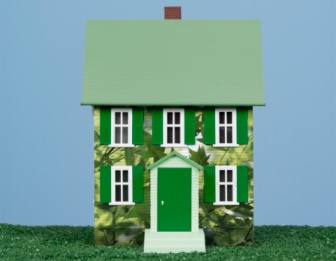

In this Edition
Construction
Management Specialists
111 Pine Street, Suite 1315
San Francisco, CA 94111
(415) 981-9430 (San Francisco office)
6517 Lakeview Drive
Falls Church, VA 22041
(703) 609-7494 (Washington, DC office)
2122 Hancock Street
San Diego, CA 92110
(619) 550-1187 (San Diego office)
8538 173rd Avenue NE
Redmond, WA 98052
(206) 571-0128 (Seattle office)
www.TBDconsultants.com
LOGIC NEED NOT APPLY
Geoff Canham, Editor
Writing during August 2011 we are seeing the stockmarket take a stomach-turning roller-coaster ride. What is going on? In this editorial, Geoff looks at what has been happening, and what we can expect going forward.
To date, green-building has mainly been a voluntary movement, and it has thrived in that environment. The LEED rating system, introduced by the US Green Building Council in 2000, has produced a dramatic shift in the design and use of buildings in a remarkably short period of time. That shift has certainly been needed. The effects of climate change are being felt worldwide, and the evidence tying these changes to human influence, largely through the emission of greenhouse gasses (GHGs), has been all but confirmed. And when we acknowledge that buildings in North America are responsible for more than a third of the continent’s GHGs (even more than results from the transport sector) then the need for building green becomes clear.
The rising cost of oil has been another incentive for building owners to implement the energy saving aspects of building green. Add to that the fact that building green has proved to add very little cost initially, and often gives back substantial savings in the long run, then it becomes a very attractive option; indeed it has been said that this is the most cost effective way to slow global warming and do something for the environment and mankind’s future.

While governments, including federal, state and local jurisdictions, have not been slow in getting involved either, they have been slow in laying down the law regarding green building. That might be changing, however. Up to this point, governments have been mainly active in the green-build movement by setting an example (requiring that government buildings meet green goals) and in providing incentives to encourage private developers to build green.
The GSA is the country’s largest facilities manager, looking after most of the federal government’s three billion square feet of real estate, and they have a goal of delivering a Zero Environmental Footprint. To do that, their official policy is to “seek out green technologies, practices, and ideas, test them, and weave them into the agency’s processes, relationships, and culture”. The Energy Policy Act of 2005 requires federal buildings to be at least 30% more energy efficient than IECC or ASHRAE standards, and Executive Order 13423 requires federal agencies to reduce GHG emissions by 3% annually through 2015. State and city authorities have also been leaders in their respective regions, by requiring that their buildings are built to meet specific green-building goals, often requiring them to meet a specific LEED rating (frequently Silver).
The ARRA stimulus legislation contained $5 billion specifically directed for green-build projects (that figure having been reduced from the original proposal of $7 billion). That is one example of government incentives in relation to green building, but federal, state and local governments provide other incentives as well. Tax incentives is a popular method that is often used, such as Howard County in Maryland that offers real property tax credits varying on the LEED rating that a building achieves. Grants and loans are also methods used as incentives to build green, along with expedited permitting.
A few cities and counties have required certain types of new privately-owned buildings to meet a specific LEED rating, such as Anne Arundal County in Maryland which requires achievement of a LEED rating before a final certificate of use is issued. States had initially veered away from legislating green-building requirements, but California now has its CalGreen building requirements. Other states are likely to follow suit. The federal government traditionally has not laid down mandatory building requirements, leaving that for the states to do, and this trend is not likely to change. However, building standards that states can adopt or adapt have been prepared, and that is also true for green-building standards. Standard 189.1 for the Design of High-Performance Green Buildings has been developed by ASHRAE, the USGBC and IESNA, and is related to all commercial buildings (excluding low-rise residential), both new-build and existing buildings. ICC 700 National Green Building Standard has been developed by NAHB and ICC to cover residential buildings, both new-build and renovation work.

As government legislation moves into the green-building arena, will this result in the demise of voluntary rating systems such as LEED? We suspect not. A major incentive for building owners going after a LEED certification has been to show that their building, and by implication their company culture, is more ecologically responsible than others. Simply being in conformity with the law does not achieve that result. So, government laws will not replace rating systems like LEED. They will mearly raise the bar.
In this article we look at the GSA's involvement in Building Information Modeling, and how they are trying to develop its potential uses.
Design consultant: Katie Levine of Vallance, Inc.